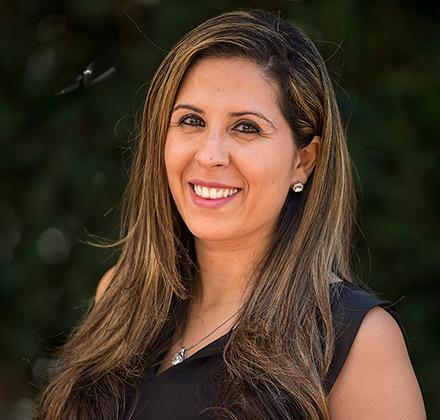
PAU Celebrates Arab American Heritage Month

Kristel Nazzal, PhD, Director of Undergraduate Engagement & Success, Director of Educational Excellence, Co-Chair of the Equity & Inclusion Committee
For the first time, the US State Department designated April as Arab American Heritage Month in 2021. Arab Americans and the Arab American Foundation specifically expressed “elation” with a letter from President Joe Biden congratulating Arab Americans on the celebration of National Arab American Heritage Month.
At Palo Alto University, Kristel Nazzal, PhD, recently presented a workshop, “Arab Americans 101” for students and colleagues to celebrate Arab American Heritage Month. Nazzal, a Palestinian American, spoke of her family’s background and traditions, but also covered history, geography, demographics, cultural components, and mental health considerations for the broader Arab American community. First and foremost, Dr. Nazzal emphasized the diversity contained within the Arab world. There are 427 million Arabs worldwide, from 22 countries. While most Arabs are Muslim, many are Christian, and some are Jewish. Between two and four million Arab Americans live across the U.S., with Los Angeles, Detroit, Chicago, and New York being home to the largest communities. Counting Arab community members has a complex history in the United States, Nazzal explained. The first waves of Arabs to arrive in the US have a classic immigration story: they came in the late 1800s seeking economic opportunities. They were also classified as white in order to more easily attain citizenship. The US government continues to classify Europeans, Middle Easterners, and North Africans as white. However, the Census Bureau tested new categories for Middle Eastern and North African (MENA) identities. This brought the number of MENA-identified people who had previously selected white on the Census from 85.5% to 20%. Despite this, a MENA category was not included on the 2020 Census. “It’s interesting to see the huge difference in the way people categorize themselves once they’re given a MENA option,” said Nazzal. “It speaks to the fact that the majority of people in the U.S., who have roots in the MENA region, have a strong desire to be seen. More culturally appropriate options can help us hone in on specific challenges impacting MENA groups, and can help us provide resources to meaningfully support Arabs and other MENA communities, including in the realm of mental health.” Regardless of the slow progress at the federal level, the community is being counted in other ways. Nazzal said that according to the Arab American Institute from 2000-2010, populations identified as having Arabic-speaking ancestry grew by 72%. In California specifically, the Arab American population grew by 28% from 2000-2008. Dr. Nazzal also highlighted psychological considerations for the Arab American community. While Arab Americans may experience mental health needs and psychological disorders just like other communities (i.e., depression, PTSD), cultural components should always be considered in client-centered care. For example, Arab Americans may be family- and community-oriented, placing a high value on relationships and social ties. Dr. Nazzal points out: “It’s important that we familiarize ourselves with cultural components of different groups That said, we should be asking how individuals view their culture, how they interact with their culture, and how they interpret and understand their culture. Being conscious about a client’s cultural perspectives can more appropriately inform treatment decisions.” Nazzal concluded with personal and positive examples that made participants feel like they were celebrating a generous and vibrant culture for Arab American Heritage Month. Nazzal spoke of the large Arabic breakfasts her family shared. And she attributes some of her motivation for becoming a therapist to seeing her grandparents act as informal therapists in their church community. “I hope this presentation was an opportunity for people to see the pride I have in my culture,” Dr. Nazzal said. “I really wanted to share this joy with the broader PAU community. I think it’s so important to rejoice in the beauty of all cultures. Learning about and celebrating different groups has exponentially enriched my life and I hope, in some small way, I have done this for others through this presentation!”